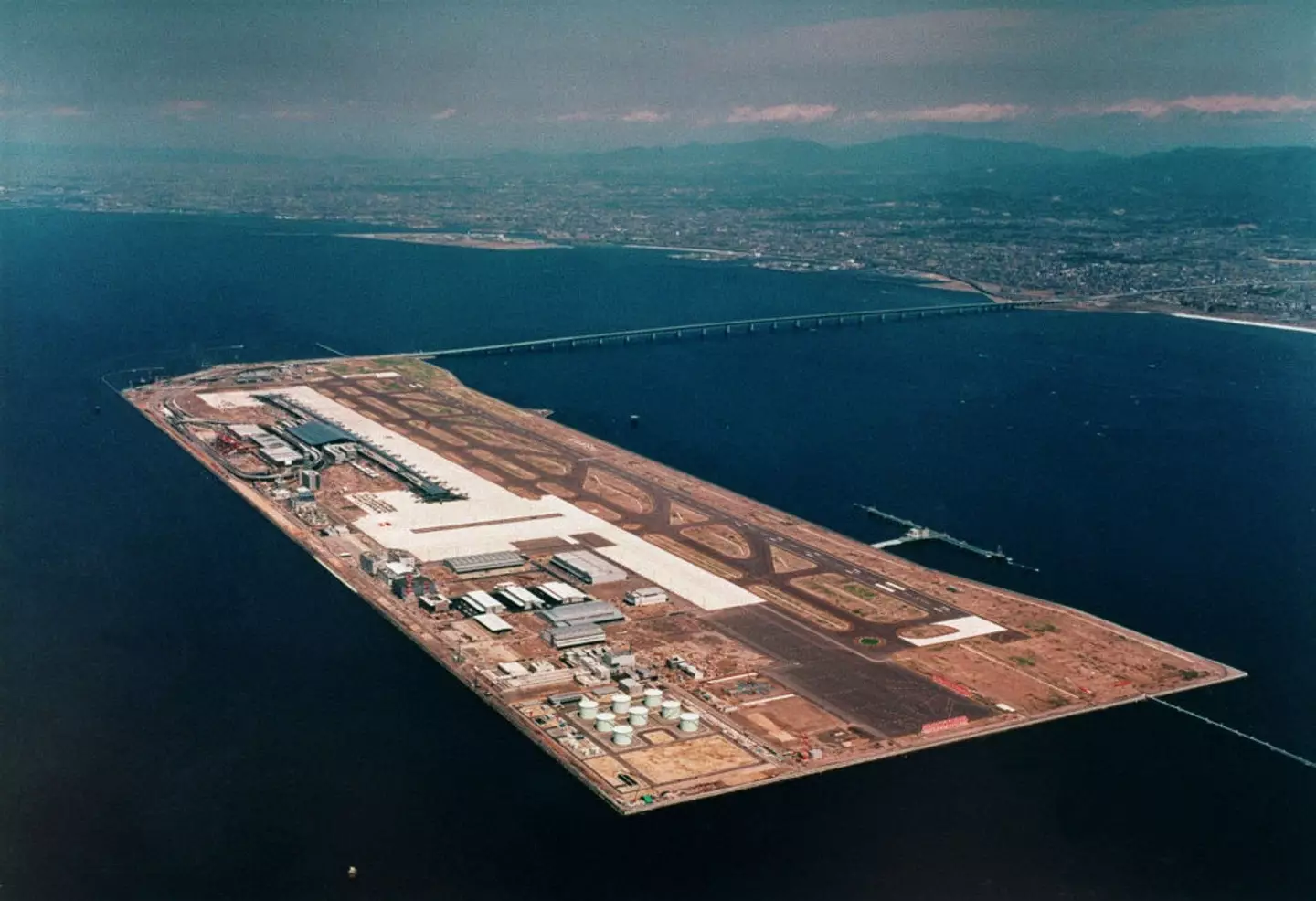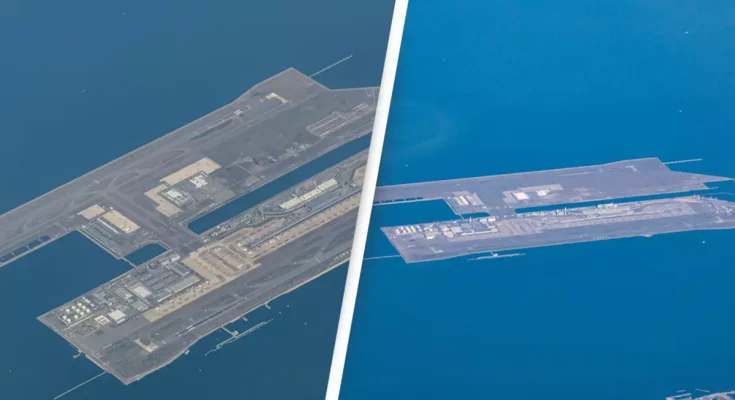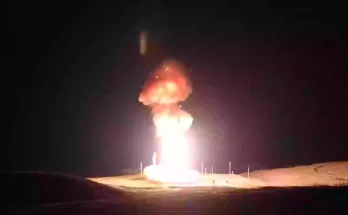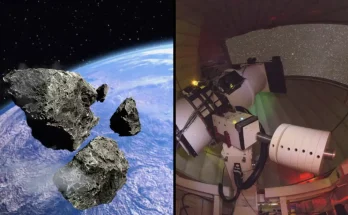It is an example of great civil engineering despite the fact it has sunk 38 feet in just 30 years
A $20 billion airport built in the sea had everything planned for… or at least almost everything.
Incredibly, Japanese architects created a ground breaking futuristic airport on the Osaka Bay, which is located in central Japan around 300 miles to the west of Tokyo.
The bay, which according to Google has a mean depth of 27 meters and flows seamlessly into the Wakayama Bay, which in turn flows into the Pacific Ocean, sits beside the port city of Osaka and is home to the Kansai International Airport.
An island – Kankūjima – was specially built to house the airport, the idea of which was first created as a solution to overcrowding at Osaka International Airport.
The island is split into two areas for each airport building – terminal one and terminal two.
Terminal one, designed by Renzo Piano, sees international and domestic flights by major airlines’ arrivals and departures and measures a whopping 1.7km making it the current longest airport terminal in the world.
Terminal two is for more local flights.
It opened back in 1994 and to date so far it has sunk 38 feet.

An undated picture of Kansai International Airport before it added a second terminal (AFP via Getty Images)
While they thought of most things during construction, including consolidating clay beneath the sea bed which the airport sits on, engineers hadn’t realised how unpredictable the level beneath the initial clay would be as it consists of pockets of sand.
Despite splashing hundreds of millions on creating a seawall, the island is expected to sink 13 more feet by 2056 – with experts predicting it will be submerged by 2100.
Inside the airport has an impressive array of shops – such as Chanel, Hermes and Cartier – as well as restaurants, it’s what the airport is like from the outside which is taking social media users’ breath away.
According to YouTube account Design Nerd, the airport sees a staggering 20 million passengers travel through it each year, making it the third busiest airport in the country, while it also transports one million tons of cargo.

Flooding of Kansai International Airport after Typhoon Jebi hit Japan’s west coast in 2018 (JIJI PRESS/JIJI PRESS/AFP via Getty Images)
And social media users are in awe of the $20 billion island site.
Taking to Twitter, one user wrote: “Kansai Airport Japan Built in Ocean..see my dear ..wht a wonderful site.”
“Wow.. This is awesome.. Airport floating in the middle of the ocean,” another commented.
A third added: “Kansai AirPort is impressive…an man made Island in the middle of the ocean.”
And a fourth wrote: “Kansai Airport Built in Ocean! Great Example of Civil Engineering!”
While it may be brilliant civil engineering, it doesn’t mean it won’t still sink.
Back in 2018, a deadly typhoon named Jebi hit Japan killing 10 people and flooded the airport having breached the sea walls.
Jebi was that powerful it knocked an oil tanker into the bridge that connected Kansai International Airport with mainland Japan, leaving hundreds of passengers stranded inside the terminals.
Featured Image Credit: Getty Stock’



